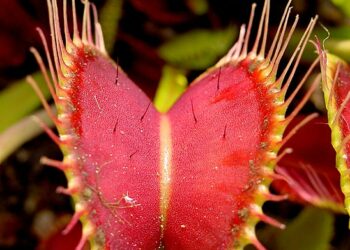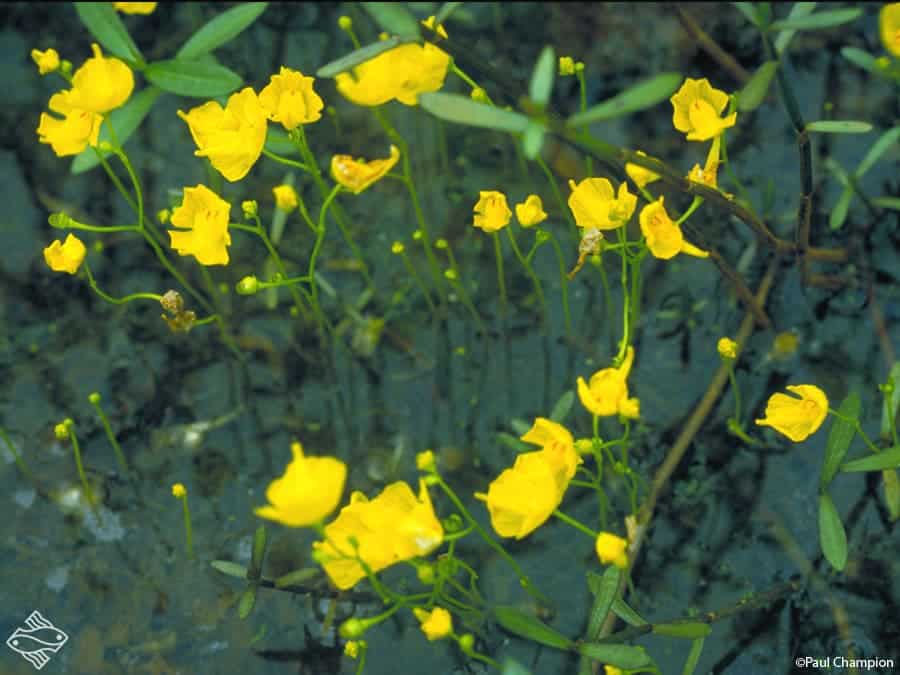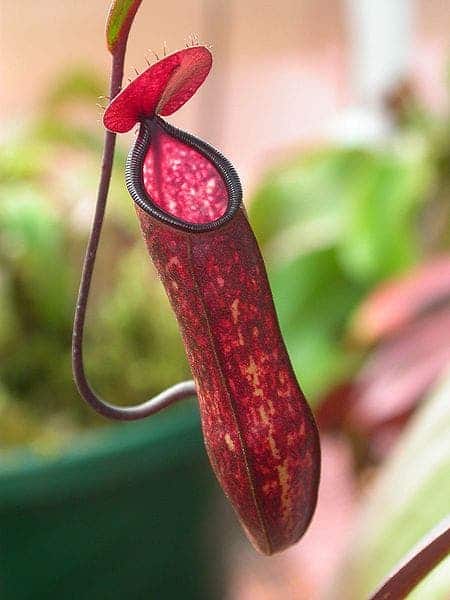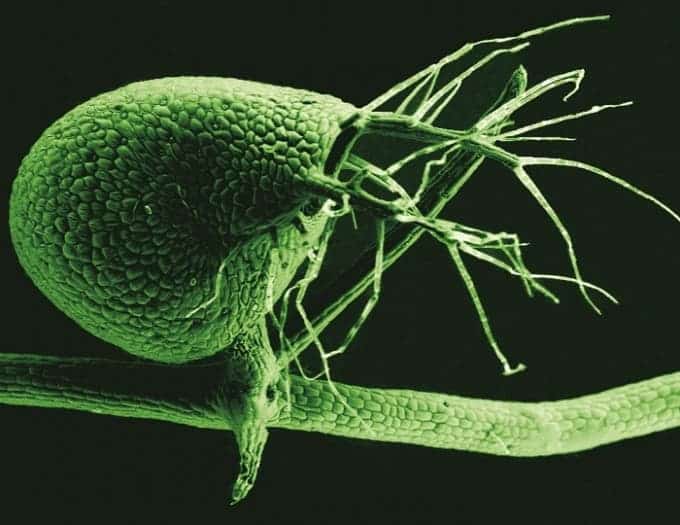The carnivorous Venus flytrap is one of the most interesting and bizarre plants in the world. It evolved specifically to trap and digest insects, and we only recently learned just how it does that. Let’s have a look.
What is the Venus flytrap
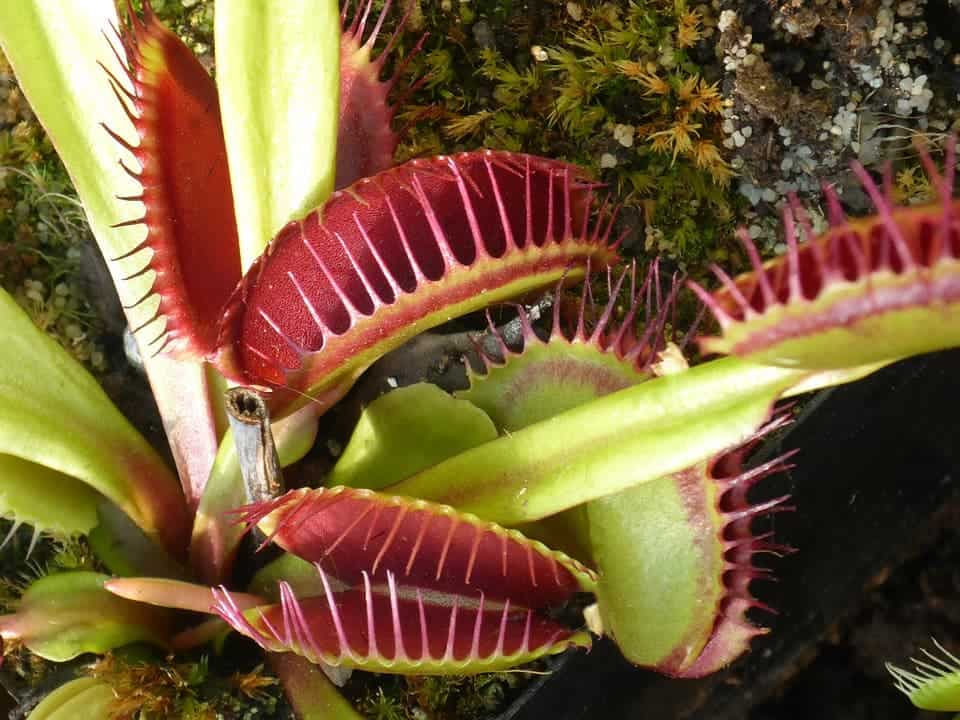
The Venus flytrap, or Dionaea muscipula, is a plant native to the subtropical wetlands on the East Coast of the United States. Like other carnivorous plants, it developed this way because it grows in nutrient-poor soil and can’t support itself through photosynthesis alone. It needed to complement its diet, so it turned predatory.
The plant has one leaf which basically turned into a trap, with two jaws that can shut quickly and strongly, rendering any insect unfortunate enough to wander into the trap unable to exit. The insects are then slowly digested and absorbed by the plant, which incredibly, manages to do all this without a nervous system, muscles, or a stomach! More on that a bit later.
The plant itself is quite small, so there’s no risk of damage to larger creatures, though it looks quite intimidating in its own right. The flytrap can exhibit several variations in shape and size, but all of them look quite similarly relative to each other. If you kneel next to one or have a close look, you’ll see a circular arrangement of four to seven flat green stalks. These stalks do perform photosynthesis, but that’s not enough to get the plant going. Even with the extra digested insects, the plant grows very slowly.
The trap
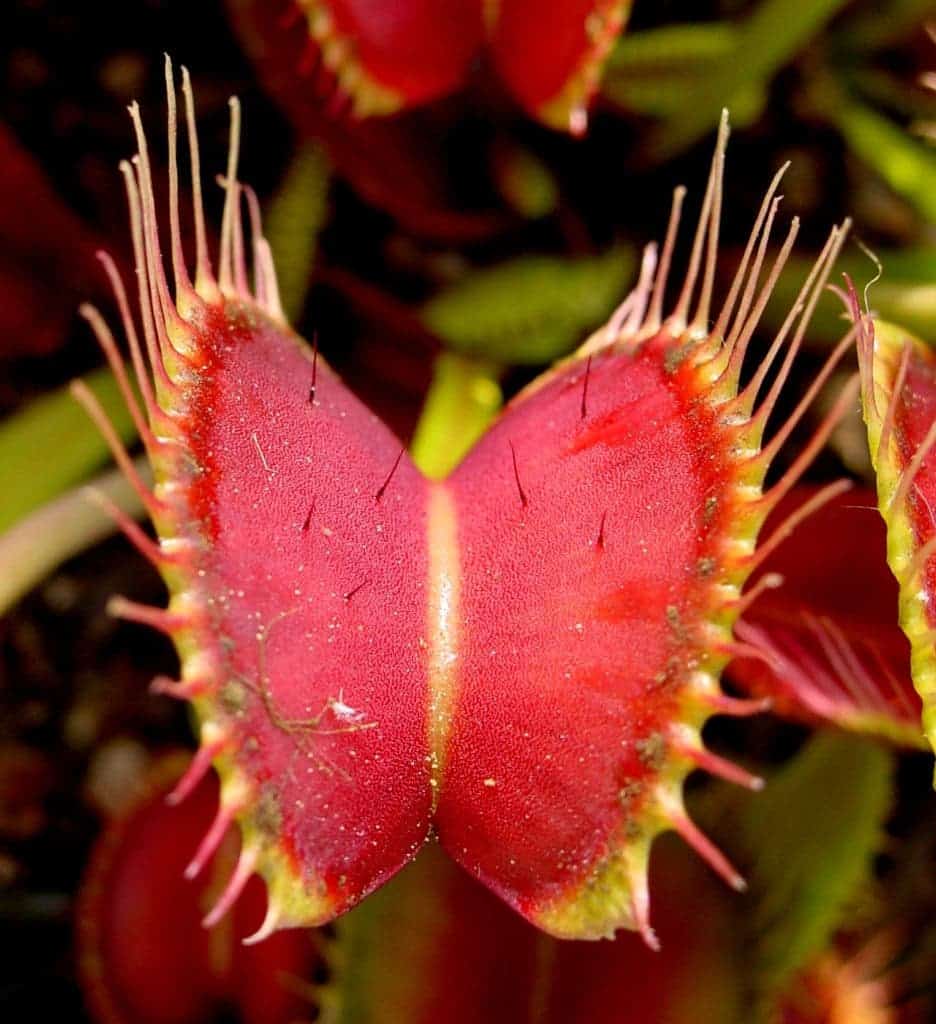
Without a doubt, the most interesting part about the Venus flytrap is the trap itself. The trap is a modified leaf: a hinged midrib, secreting sap to attract insects. Glands on the leaf also secret enzymes which help digest and absorb nutrients from the insects. The rims of each lobe flair out in a curved row of spikes to prevent the prey from escaping. Interestingly, the spikes are designed in such a way that they permit the escape of smaller prey. This is likely because there’s not enough incentive to eat very small insects — there’s just not enough “meat” to them. In fact, it’s been often documented that the plant actually releases smaller insects. Since trapping and digesting are quite taxing processes, it probably doesn’t want to invest all that effort if the reward is not big enough.
When the plant senses an insect, it shuts down in less than 0.1 seconds — but how does it shut down so fast, and how does it sense insects in the first place?
The two questions are actually interconnected. The inside of the trap is lined with a few sensitive hairs, with a bit of distance between them. If you only touch one of them, like a raindrop would do, for instance, nothing happens. Even if you touch several of them but only once (and that’s once every 20 seconds), nothing happens. You need to touch several of them more than once in 20 seconds (as a scurrying insect would) to shut the trap.

“These hairs are mechanosensors,” said Alexander Volkov, a plant physiologist at Oakwood University in Alabama who has intensively studied how the Venus flytrap works. “The hairs transfer mechanical energy into electrical energy.” The pressure anything brushing against the hair is translated into a little electrical charge that the travels to the midrib of the trap and signals it to snap.
Whoa whoa whoa, hold on there. We said the plant doesn’t have any nervous system so then how do they work out the electrical charge? Well, plants don’t have a nervous system, but in this case, the electric signal opens up specialized pores in the outermost layer of the trap’s cells. In turn, this allows water to rush from cells on the inside of the lobes to cells on the outside of the lobes, and this difference of pressure snap shuts the trap.
It’s not that unusual for plants to use electric signals — after all, nervous system or not, all cells are electric, and plants often take electrical cues through a cellular mechanism. The Venus flytrap is no exception, although the way in which it uses these signals is.
So, after an insect touches the trap twice in less than 20 seconds, sensitive hairs on the inside send an electric signal changing cellular water pressure in the lobes, shutting down the trap. The plant is then digested, and the trap only opens to reveal a digested exoskeleton.
Buy and grow a Venus flytrap
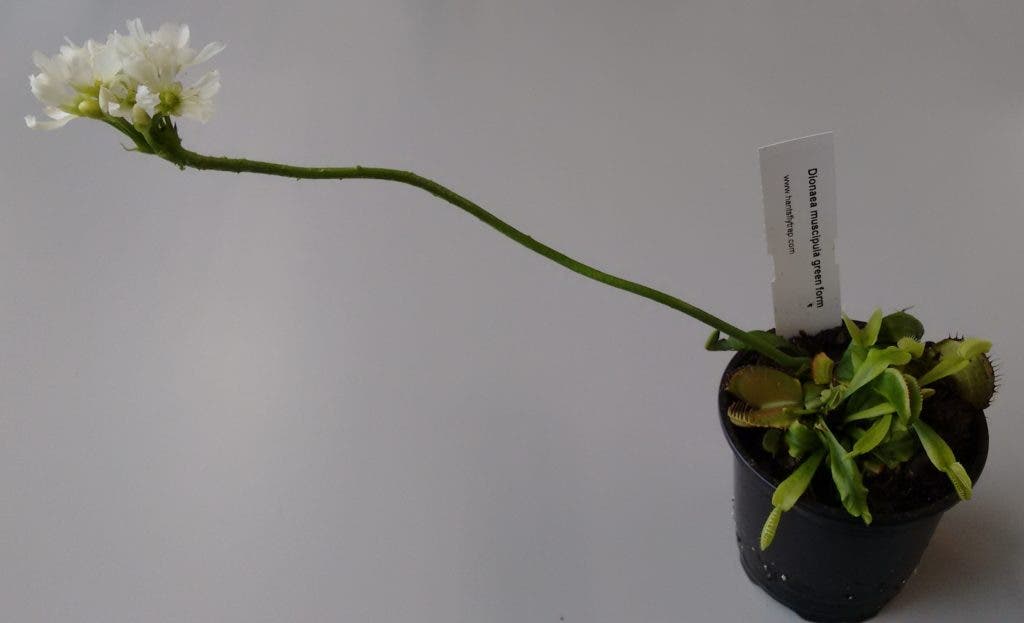
Firstly, the most important thing you check the provider of the plant. You should only buy from legitimate greenhouses, make sure it’s not a wild plant that you’re buying. Also, don’t just pick up wild flowers — the Venus flytrap is protected and it might get you into a lot of troubles, aside from damaging an already threatened species.
This being said, you shouldn’t have many problems finding a reputable supplier. Venus flytraps are by far the most commonly recognized and cultivated carnivorous plants, and you’ll likely be able to find several cultivars (cultivated varieties). However, it can be quite difficult to successfully grow them.
You can grow them in a variety of climates, you don’t need to exactly replicate the temperatures they’re used to. However, having a proper soil is crucial. Overall, the closer you get to replicating their native habitat, the more chances you have of managing to grow them.
Perhaps counterintuitively, it’s important to use a soil that’s poor in nutrients. Regular soil, which is rich in nutrients, will burn the plant roots and kill them right away. Fertilizer is also a big no-no. Perhaps the simplest soil you can get is peat moss mixed with perlite. There’s a decent chance you will find peat moss at your local gardening store and perlite is also quite common. The simplest mixture is going half-half with the peat and the perlite, but if you want to customize and improve things a bit, you can use a mixture that’s 5 parts peat moss, 2 parts perlite, and 3 parts silica sand. That way, you’ll create the conditions for a very healthy root system that should get your plant going. Silica sand (also called white sand) is ideal because it doesn’t release any minerals in the soil.
You don’t necessarily have to feed the plant. There’s a good chance it might catch something on its own. Even if it doesn’t, some owners report never feeding it, and the plant still doing fine. If you want, you can purchase crickets or some other type of insects (already killed), and slowly drop them into the traps. You should only feed each trap a few times a year.
Venus flytrap facts
Charles Darwin was absolutely fascinated by these plants. He found it amazing that they managed to defy all the laws of plants — they move and they eat other creatures.

“This plant, commonly called Venus’ fly-trap,” Darwin wrote in Insectivorous Plants(1875), “is one of the most wonderful in the world.”
His feeling is echoed by that of other biologists, who appreciate it for its highly evolved survival tactic and its surprisingly complex mechanism. However, despite all this, it’s not doing so fine in modern times, and it’s threatened more and more by extinction. Nowadays, it can only be natively found in two states of the US — North Carolina and South Carolina. In 2015, there were estimated to be fewer than 33,000 plants in the wild, all within 75 miles (121 km) of the city of Wilmington, North Carolina. Here’s how you can help.
You might see flytrap extract available on the market as a herbal remedy, even recommended in dangerous diseases such as HIV. As is the case with most instances of alternative medicine, there’s no scientific evidence to support its usefulness. It just doesn’t help you. Otherwise, it would be called… you know, just medicine.
Also, as we mentioned above, it’s important to not tear down any plants. Be extra careful, as in some counties, this is classified as a crime. It’s OK to buy Venus flytraps, as long as they come from a certified greenhouse. Also, if you see one in the wild, leave it alone. Take only photos, leave only footprints. Though some insects might protest, the Venus flytrap is an environmental wonder, so let’s help preserve it for future generations.
